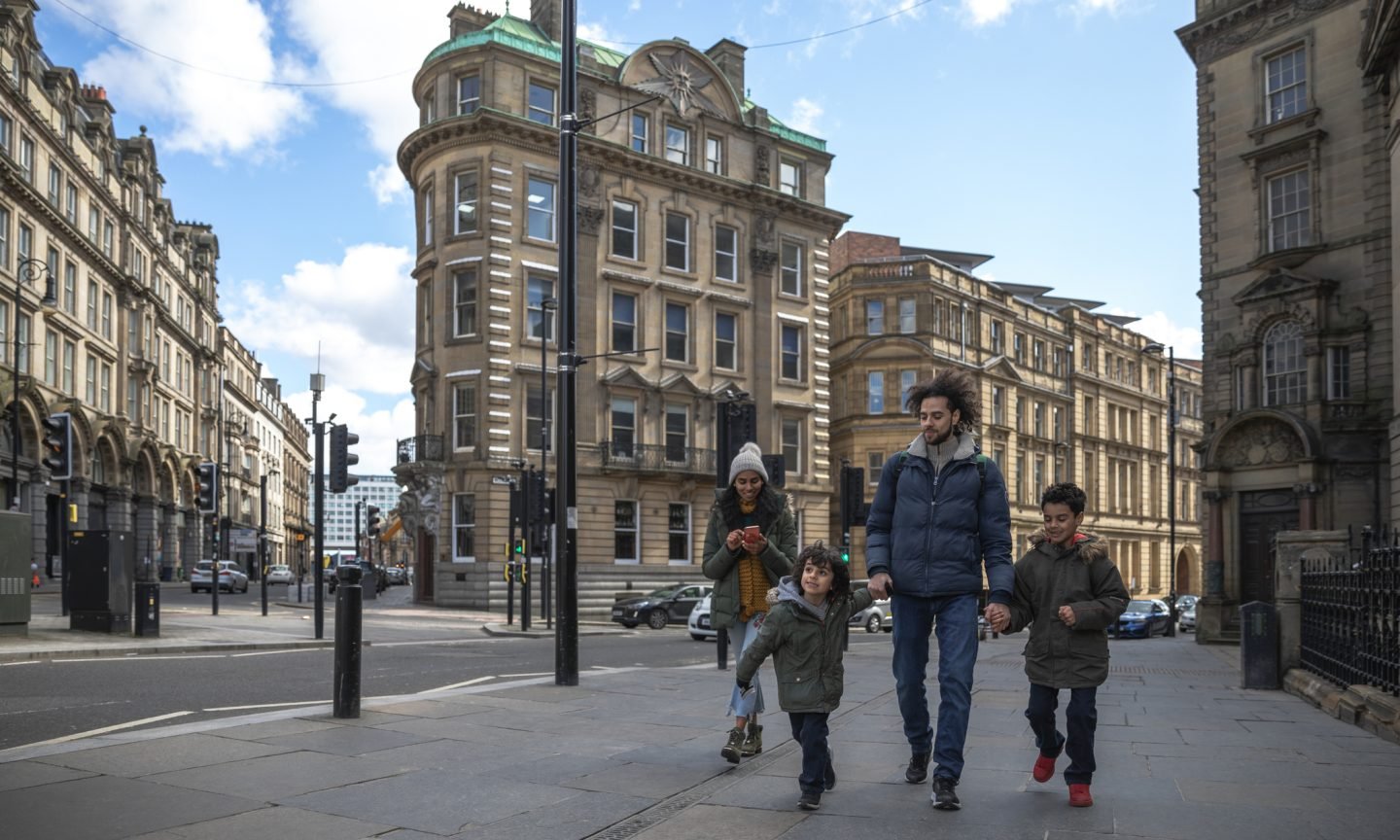
For some, “digital nomad” evokes the image of a young, unencumbered tech worker sending emails from the beach. Indeed, three-quarters of digital nomads are under age 40, according to a 2023 survey of over 1,200 digital nomads by Flatio, an online accommodation platform.
Yet some families have joined the digital nomad lifestyle, leaving their belongings — and the idea of a “home” — behind as they travel the globe. The lifestyle may not afford families the same hammock-swinging freedom that digital nomads without children enjoy, but these adventurous parents say the trade-offs are worth it.
“We really like the whole adventure,” says Chris Oberman, founder of Moving Jack, a blog about his family’s trips around the world. “Normal things like going to the supermarket become really special because it’s a new experience.”
Originally from the Netherlands, Oberman, his partner, their 6-month-old baby and their two cats are currently in Iraq. They plan to move to South Korea this summer.
“Logistically, it requires a lot of planning,” Oberman says. “Before we move abroad, we return to our home country to arrange all necessary documents. Since we don’t own a house, we either stay with family or rent a place. When we depart for our new destination, we stay in a temporary place such as a serviced apartment or hotel that allows cats (which isn’t easy to find).”
In the midst of this explanation, the power went out.
“The power goes out five times a day,” Oberman says with a laugh, highlighting some of the unexpected challenges of living abroad with a family.
Schools and social circles
Schooling poses one of the biggest challenges to families living on the road. Oberman’s infant is too young for school, so that’s not an issue, but other digital nomad families must get creative when it comes to education.
“Our decision on where to go is influenced by factors such as having internet access to educational opportunities for our kids, safety and cost of living,” Vasilii Kiselev said in an email. Kiselev is from Florida, and his family of four is currently nomading in Portugal. “[We] incorporate local culture and history into their learning experience.”
This approach reflects an educational movement called “world schooling,” an unofficial term that describes an educational approach centered around cultural immersion. Some, like Kiselev, still seek formal education while traveling, while others combine nomadism with homeschooling. The Facebook group “Worldschoolers” has over 67,000 members.
And while it might sound challenging for children to get uprooted regularly, Kiselev, whose children are ages 8 and 12, suggests that adjusting to nomadism is a matter of practice.
“They have adapted well to the lifestyle,” Kiselev said.
Changing friend groups and even languages from one month to the next can be a challenge for anyone, never mind a child. Oberman says he’s aware of the social difficulties that lie ahead for his son.
“As he makes friends, it could be tough for him.”
Budgets and trade-offs
Raising kids is expensive whether at home, abroad or on Mars.
It’s easy to be daunted by the cost of traveling full time with a family, especially given how expensive a few weeks’ vacation can be. Yet many nomadic families are able to maintain a budget when living full time on the road.
Kiselev’s family budgets about 1,500 to 2,500 euros ($1,629 to $2,715) per month for housing.
“It’s pricey but necessary for a comfortable living space.”
Another cost is private school, which costs Kiselev about 500 to 1,000 euros ($543 to $1,086) per month, or $6,516 to $13,032 per year — an attractive price for many U.S.-based parents in high cost-of-living areas.
For comparison, according to a study last updated in October 2023 by the Education Data Initiative, a research group focused on the U.S. education system, the average annual private school tuition across grade levels K-12 in Massachusetts is $25,061, and California’s average is $16,637.
Of course, that doesn’t include last-minute hotels, airfare, travel insurance and all the other expenses accrued from shuttling a family around the globe. Oberman’s family found themselves flying back and forth from Iraq to the Netherlands and Dubai during the pregnancy because of concerns about the quality of health care in Iraq. Those expenses can add up in a hurry and swamp any savings from lower overall costs of living.
Yet many families find the financial trade-offs worth it in terms of the experiences they and their families are able to accrue.
“Showing our child so much of the world is very rewarding and helps him grow with a global perspective,” says Oberman.


